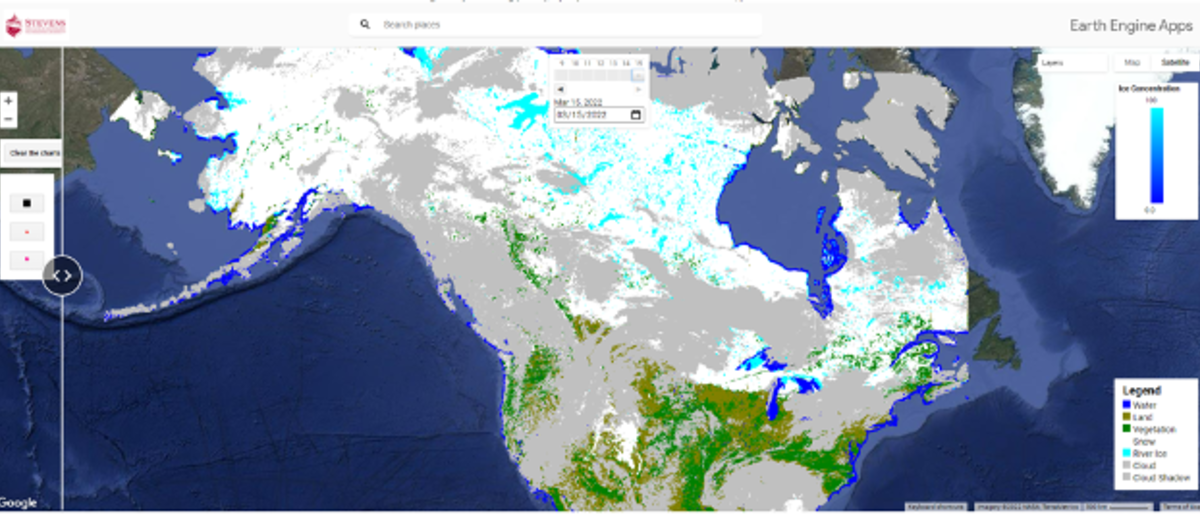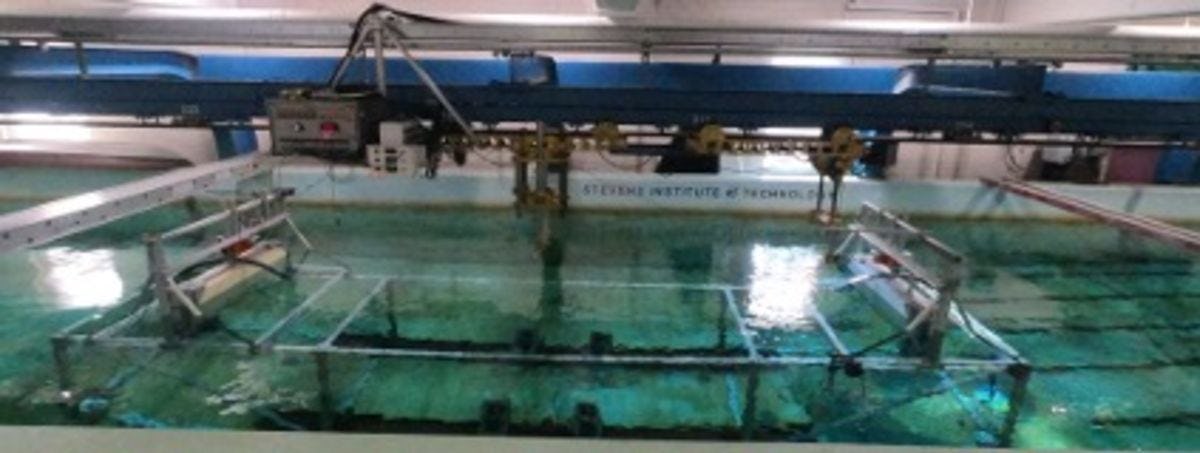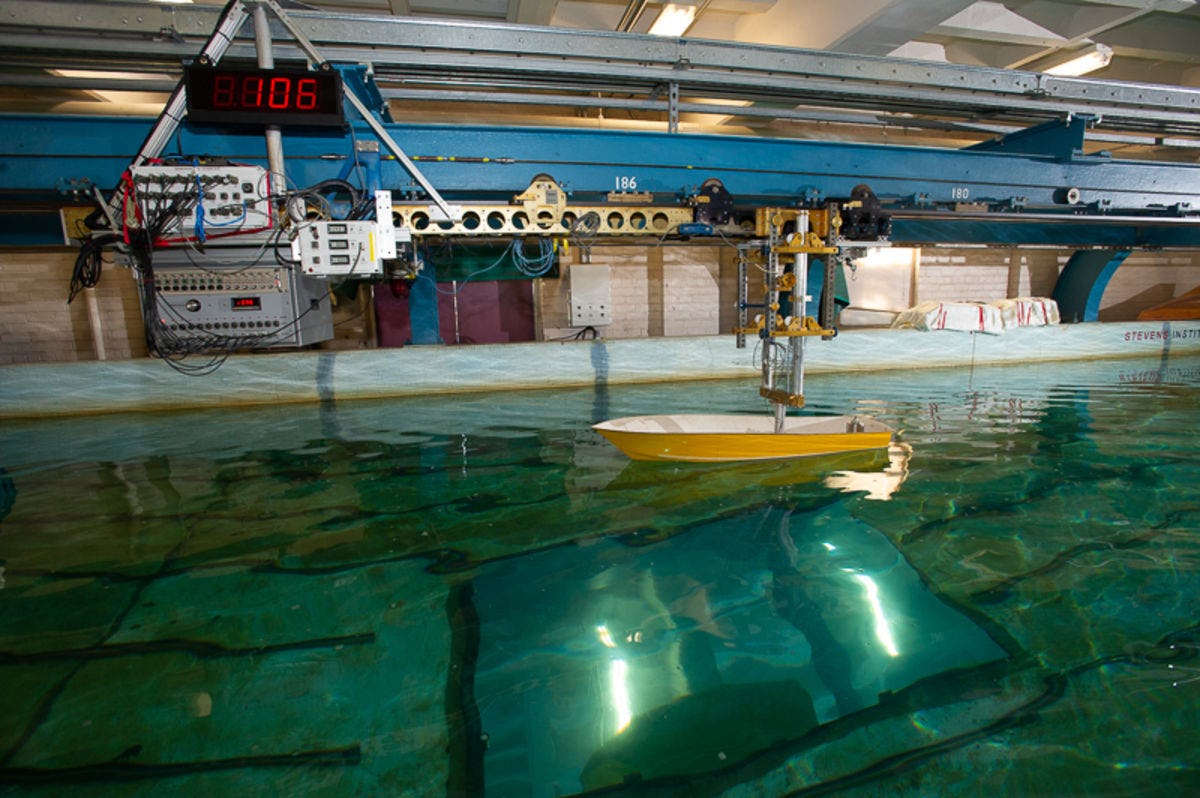Davidson Laboratory Research
Stevens’ Davidson Laboratory innovates the science serving this growing global urban population, applying its expertise in coastal ocean physics and forecasting to problems that affect the 20 million residents of the New York metropolitan area. Davidson Lab experts also create novel infrastructure and coastline rebuilding solutions, and assess the effectiveness of urban shore protection initiatives, beach erosion mitigation plans and zoning laws to prepare for future natural disasters.
Technical Thrusts
The Davidson Laboratory supports academics in areas such as naval architecture, marine hydrodynamics and coastal observing systems.
Resilience Tools
In support of the resilience projects several tools have been developed which facilitate innovative research at the Davidson Laboratory and its collaborators.
Wave and Towing Tank
Davidson Laboratory houses a 313 feet long x 12 feet wide x six feet deep towing tank, with a dual flap programmable wave maker capable of generating two-foot waves. Researchers have tested dozens of shore protection and other structures in the tank, including beach dewatering, coastal revetments, offshore breakwaters, and underwater unmanned robots.
New York Harbor Observing and Prediction System (NYHOPS)
Davidson Lab experts created and maintains the New York Harbor Observing and Prediction System (NYHOPS), a vital forecasting resource for emergency preparedness. NYHOPS is part of the Urban Ocean Observatory at Davidson Lab and provides a real-time assessment of ocean, weather, and environmental conditions throughout the waters of New York, New Jersey and Long Island Sound. This information is available to serve the maritime user community in the same way that atmospheric weather forecasting has delivered for on-land populations. Real-time observations and 48-hour predictions include water level, currents, waves, salinity, and temperature and a full suite of meteorological parameters. The technology uses real-time observations from an advanced, integrated system of fixed and mobile (from ferry and sightseeing vessels) oceanographic and meteorological sensors and a verified estuarine and coastal ocean forecasting model.
Stevens Flood Advisory System
The Davidson Laboratory maintains the Stevens Flood Advisory System (SFAS), a fully-automated, ensemble-based flood advisory system that dynamically integrates real-time observations and river and coastal flood models forced by an ensemble of meteorological models at various scales to produce and serve street scale flood forecasts over urban terrain during extreme rain events or storm surges. The SFAS is applied to the Greater New York/New Jersey Metropolitan region, and is used routinely by multiple forecast offices and departments within the US National Weather Service (NWS), regional and municipal Offices of Emergency Management, as well as by the general public.
Stevens Data Center and Hyper-Scale Computing Center
The Information Systems Group provides support and data storage for both real-world data acquisition and model forecasting, as well as for the generation of high-resolution model and real-time data images utilized in visualizations.
Marine Obeservation Group Research Vessels
The Marine Operations Group provides support through the use of the laboratory’s two research vessels, the RV Phoenix and the RV Savitsky. The RV Phoenix is a 25-foot outboard, while the RV Savitsky, our newest acquisition, is a 40-foot inboard diesel. Both vessels are equipped with modern electronics for both navigation and surveying as well as with electric side winches. The RV Savitsky is additionally outfitted with a 1,500-pound-capacity hydraulic A-frame winch. The Davidson Laboratory is also equipped with a full suite of modern instrumentation to measure currents, both locally and remotely, turbidity and suspended particle distribution, as well as salinity, temperature and depth.



